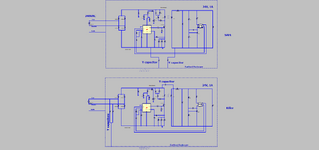cupoftea
Advanced Member level 6

Hi,.
We are hipot testing an offline flyback PCB. The flyback is totally enclosed in
an earthed metal enclosure.
Unfortunately, on the secondary side, there is a via under a connector, and this via is
just 1.2mm away from a bit of the earthed enclosure. As such, this flashes over
and causes hipot fail, since the actual earth must not be connected for the hipot test.
Anyway, i spread some acrylic conformal coat over the via and left it to cure.
But when it had cured, the conformal coat had parted itself away from the via, and so the via
is still exposed, even though i pasted conformal coat right over it. As such, the board still fails flash test.
Do you have any ideas for ways in which i can get the conformal coat to cure and stay
covering the via? The via is just 0.3mm hole and 0.6mm diameter (round). We cant drill the via out as this would expose internal
ground plane and we would then just fail hipot on that.
We are hipot testing an offline flyback PCB. The flyback is totally enclosed in
an earthed metal enclosure.
Unfortunately, on the secondary side, there is a via under a connector, and this via is
just 1.2mm away from a bit of the earthed enclosure. As such, this flashes over
and causes hipot fail, since the actual earth must not be connected for the hipot test.
Anyway, i spread some acrylic conformal coat over the via and left it to cure.
But when it had cured, the conformal coat had parted itself away from the via, and so the via
is still exposed, even though i pasted conformal coat right over it. As such, the board still fails flash test.
Do you have any ideas for ways in which i can get the conformal coat to cure and stay
covering the via? The via is just 0.3mm hole and 0.6mm diameter (round). We cant drill the via out as this would expose internal
ground plane and we would then just fail hipot on that.


